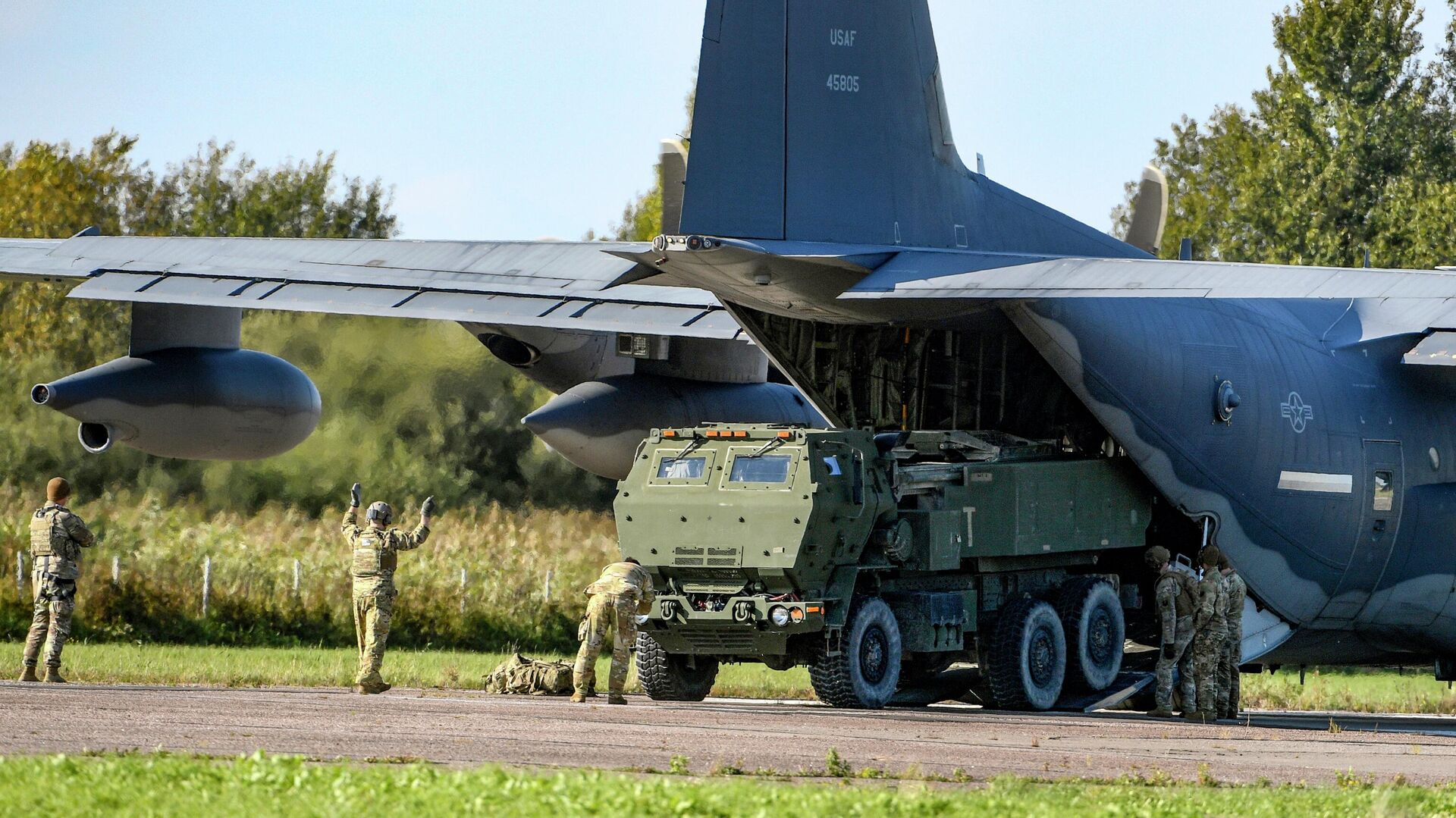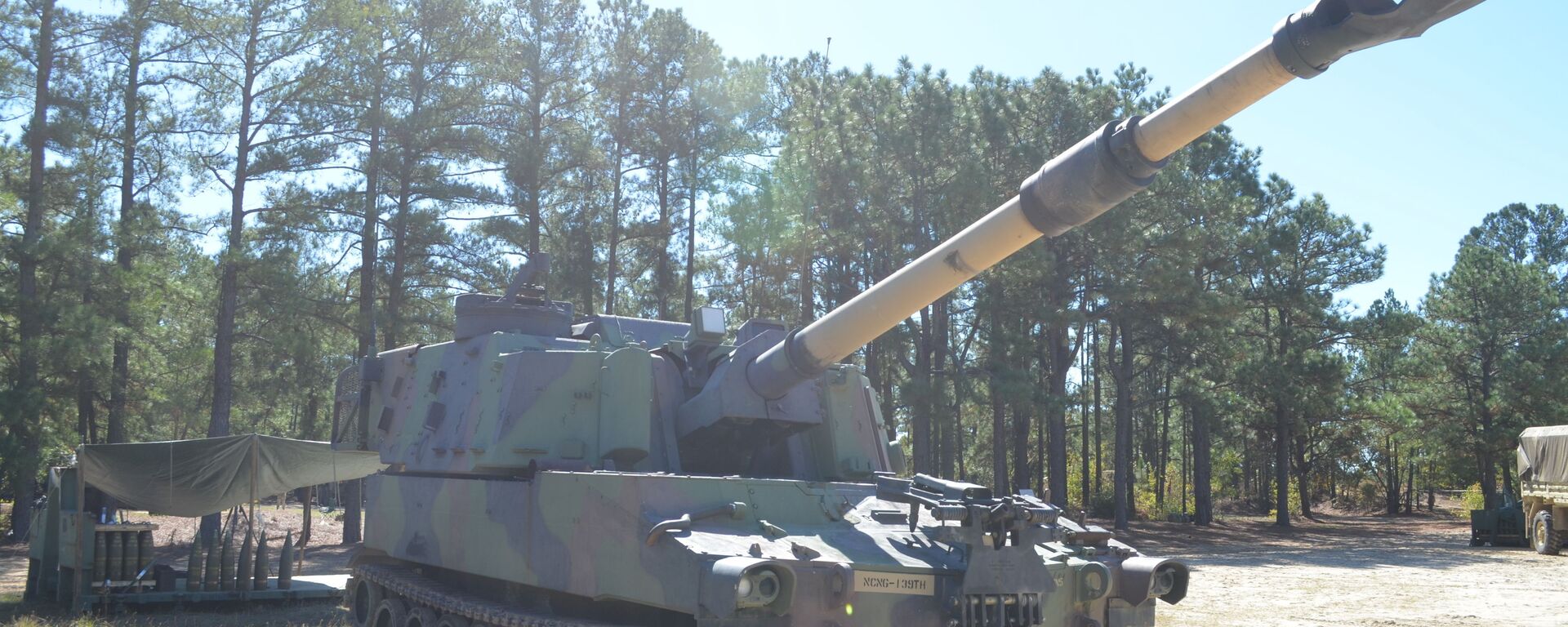https://sputnikglobe.com/20221128/how-did-us-weapons-ordered-by-taiwan-wind-up-in-ukraine-1104790102.html
How Did US Weapons Ordered by Taiwan Wind Up in Ukraine?
How Did US Weapons Ordered by Taiwan Wind Up in Ukraine?
Sputnik International
It’s been revealed that weapons ordered by Taiwan from the US as far back as 2015 haven’t been delivered, with the backlog growing from $14 billion in late... 28.11.2022, Sputnik International
2022-11-28T14:10+0000
2022-11-28T14:10+0000
2023-06-19T12:45+0000
sputnik explains
us
weapons
ukraine
backlog
delivery
arms
taiwan
https://cdn1.img.sputnikglobe.com/img/07e6/0a/04/1101485130_0:321:3071:2048_1920x0_80_0_0_cb3d583769e1abf5c65f61885d131697.jpg
Despite pretentious pledges by Washington to help “defend” Taiwan against possible “Chinese aggression,” and claims that Beijing could be preparing to “invade” the island as soon as next year, US weapons makers have fallen woefully behind in making good on their promises to help turn the island into an anti-China “porcupine” bristling with advanced American military hardware.On Sunday, US media reported that the backlog on US weapons deliveries to Taipei has jumped by over 25 percent over the past year alone, rising by nearly $5 billion in one year’s time, at the same time as the US military-industrial complex continues to take on orders which could take years to fulfill. Citing one example, the report pointed out that some 400+ Javelin anti-tank and Stinger surface-to-air missiles ordered in late 2015 have yet to arrive, some seven years on.No Business Like War BusinessThe United States has sold Taiwan tens of billions of dollars’ worth of military hardware since the late 1970s, with deliveries ranging from fighter jets and helicopters to precision missiles and heavy artillery, armor, mortars, radar, ASW and EWACS equipment, and even warships.Between 2000 and 2016 alone, US defense companies penned contracts with Taiwan worth nearly $32 billion in inflation unadjusted dollars.Orders hit $18.33 billion in the four years of the Trump presidency alone, and included 66 new F-16 fighter jets, 108 Abrams main battle tanks, 11 HIMARS launchers, 64 MGM-168 ATACMS missile systems, and four MQ-9 Reaper drones. They also included an array of advanced missile weaponry, including air-launched HARM missiles, SLAM-ER standoff ground attack missiles, ship-based RIM-66 surface-to-air missiles, MK48 torpedoes, and AGM-154 Joint Standoff Weapon glide bombs. Billions more were laid out for spare parts, engines, upgrade kits, technical documentation, and training.In the 22+ months that Joe Biden has been president, his administration has pledged to sell another $2.2 billion in weapons to Taipei, including 40 M109A6 Paladin high-precision self-propelled howitzers, 25 ammunition supply and support vehicles, 100 AIM-9X Sidewinder air-to-air missiles, and 60 Harpoon anti-ship missiles (the order was penned in September). Additional items include engineering services and contractor support for Taiwan’s inventory of 400 PAC-3 Patriot missiles, and spare parts for ships.Greed is GoodWith tensions in the Taiwan Strait rising amid Biden’s repeated stoking of Chinese fury by pledging to scrap Washington’s policy of “strategic ambiguity” vis-à-vis the island in favor of a firm commitment to “defend” Taipei, Taiwanese officials and media have noticed something peculiar: the weapons they bought – sometimes as far back as two US administrations ago – are not arriving.US media now estimates the total size of the backlog to have hit $18.7 billion.Throughout the past year, American weapons makers have pointed to the ongoing crisis in Ukraine to explain away the delays. In May, Taiwan’s Defense Ministry announced that it would have to find a stopgap replacement to the Paladins it ordered in 2021, after BAE Systems Inc. informed Taipei that it wouldn’t get the system until “2026 at the earliest.”Other weapons meant for Taiwan may have also wound up in Ukraine instead, ranging from Javelin and Stinger missiles (Washington and its allies have sent thousands to Kiev), to HIMARS (the US has delivered at least 26 of the precision artillery systems to Ukraine, with the Russian military saying it’s destroyed at least 10 of them to date).Even before the escalation of the Ukraine crisis, Washington had excuses for the failure to deliver weapons to Taiwan on time. Lockheed Martin has explained, for example, that the 66 F-16 jets Taiwan bought for $8 billion in 2019 faced production delays thanks to COVID and supply chain issues.Limited Time Offer, Buy NowNotwithstanding the years-long backlog and delays, Washington has continued to lobby Taipei to "buy American," even citing the Ukraine crisis as a selling point. “This is a big lesson learned and a wakeup call, particularly with respect to not only having the right kit, but...people trained to use it the right way,” US Chief of Naval Operations Admiral Michael Gilday said in May. Gilday, incidentally, is one of those Pentagon officials claiming China could invade Taiwan in 2023.Arms sales to Taiwan is a bipartisan affair. In July, shortly before Democratic House Speaker Nancy Pelosi set off on her provocative trip to Taiwan, Republican lawmakers slapped together a “lend-lease” military assistance bill for the island, proposing a 12-year repayment window for any lent or leased weapons in the event of war. Congress has also proposed ramping up support to Taipei by designating Taiwan a “Major Non-NATO Ally,” a step which would further ease arms sales.Last month, Japanese media reported that officials in Washington and Taipei were holding “initial discussions” on a joint weapons production agreement, which could ease the transfer of US military technology to Taiwan for its manufacture on the island, and/or build weapons inside the US from components made in Taiwan.Promises, PromisesWhy does the US keep pumping up Taipei’s hopes for additional weapons, notwithstanding the multi-year backlog in deliveries which could run the better part of a decade? Part of the answer may be that despite its huffing and puffing, Washington doesn’t really believe that the People’s Republic will try to reunite with the island by force. Why might they think that? Perhaps because Washington listens to what Chinese officials are actually saying.In his address to the 20th Congress of the Chinese Communist Party in October, President Xi Jinping reiterated that Beijing remains committed to a peaceful reunification of Taiwan and the mainland.How did most Western media report on Xi's speech? By quoting his warning that China would “never compromise to renounce the use of force” in the face of threats by external forces (read: the US) and Taiwan separatists seeking to permanently separate the island from the mainland.Food for ThoughtIn addition to being seen as provocative by Beijing, American weapons sales to Taiwan are technically illegal under treaties underpinning Sino-US relations. As the Office of the Historian at the US State Department notes on its website, an August 17, 1982 US-China communique commits the US to “gradually reduce” its weapons sales to the island.The treaty, signed over 40 years ago now, acknowledges Taiwan as a part of China, and states that Washington “does not seek out a long-term policy of arms sales to Taiwan, that its arms sales to Taiwan will not exceed, either in qualitative or in quantitative terms, the level of those supplied in recent years since the establishment of diplomatic relations between the United States and China, and that it intends gradually to reduce its sale of arms to Taiwan, leading, over a period of time, to a final resolution.”Why has Washington consistently dragged its feet on meeting its treaty obligations before Beijing in the four decades since? Perhaps it just doesn’t want to lose the "goose" that gives US weapons makers tens of billions of dollars’ worth of "golden eggs," even if this means risking war with China.
https://sputnikglobe.com/20221128/us-worried-aid-to-ukraine-could-cause-arms-shortage-for-taiwan---reports-1104768097.html
https://sputnikglobe.com/20221114/how-biden-stumbles-over-statements-about-us-policy-regarding-taiwan-1104093287.html
https://sputnikglobe.com/20220502/taiwan-forced-to-go-howitzer-free-as-us-military-industrial-complex-pumps-out-guns-for-kiev-reports-1095203610.html
https://sputnikglobe.com/20221110/top-pentagon-officer-says-us-will-train-and-equip-taiwan-as-xi-recalculating-potential-conflict-1103992744.html
https://sputnikglobe.com/20221102/taiwan-will-halve-the-size-of-new-frigates-to-cut-costs-on-shadowing-chinese-ships-1103147321.html
ukraine
taiwan
Sputnik International
feedback@sputniknews.com
+74956456601
MIA „Rosiya Segodnya“
2022
News
en_EN
Sputnik International
feedback@sputniknews.com
+74956456601
MIA „Rosiya Segodnya“
Sputnik International
feedback@sputniknews.com
+74956456601
MIA „Rosiya Segodnya“
us, taiwan, ukraine, weapons deliveries, weapons backlog, arms backlog, arms deliveries
us, taiwan, ukraine, weapons deliveries, weapons backlog, arms backlog, arms deliveries
How Did US Weapons Ordered by Taiwan Wind Up in Ukraine?
14:10 GMT 28.11.2022 (Updated: 12:45 GMT 19.06.2023) It’s been revealed that weapons ordered by Taiwan from the US as far back as 2015 haven’t been delivered, with the backlog growing from $14 billion in late 2021 to $18.7 billion now. Taipei says some arms meant for Taiwan have been diverted to Ukraine instead. How could such a mix-up occur? What kinds of arms has the US promised? Sputnik explains.
Despite pretentious pledges by Washington to help “defend” Taiwan against possible “Chinese aggression,” and
claims that Beijing could be preparing to “invade” the island as soon as next year, US weapons makers have fallen woefully behind in making good on their promises to help turn the island into an anti-China
“porcupine” bristling with advanced American military hardware.
On Sunday, US media reported that the backlog on US weapons deliveries to Taipei has jumped by over 25 percent over the past year alone, rising by nearly $5 billion in one year’s time, at the same time as the US military-industrial complex continues to take on orders which could take years to fulfill. Citing one example, the report pointed out that some 400+ Javelin anti-tank and Stinger surface-to-air missiles ordered in late 2015 have yet to arrive, some seven years on.
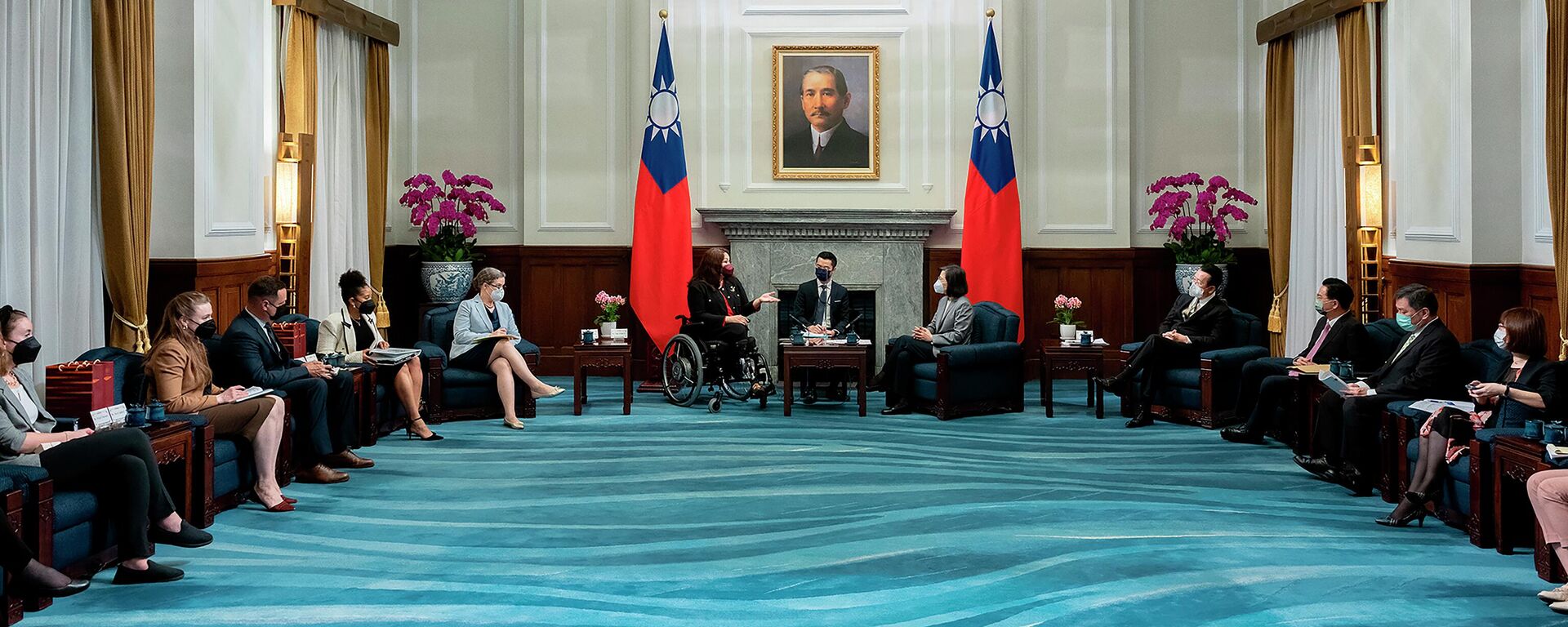
28 November 2022, 02:07 GMT
No Business Like War Business
The United States has sold Taiwan tens of billions of dollars’ worth of military hardware since the late 1970s, with deliveries ranging from fighter jets and helicopters to precision missiles and heavy artillery, armor, mortars, radar, ASW and EWACS equipment, and even warships.
Between 2000 and 2016 alone, US defense companies penned contracts with Taiwan worth nearly $32 billion in inflation unadjusted dollars.
Orders hit $18.33 billion in the four years of the Trump presidency alone, and included 66 new F-16 fighter jets, 108 Abrams main battle tanks, 11 HIMARS launchers, 64 MGM-168 ATACMS missile systems, and four MQ-9 Reaper drones. They also included an array of advanced missile weaponry, including air-launched HARM missiles, SLAM-ER standoff ground attack missiles, ship-based RIM-66 surface-to-air missiles, MK48 torpedoes, and AGM-154 Joint Standoff Weapon glide bombs. Billions more were laid out for spare parts, engines, upgrade kits, technical documentation, and training.
In the 22+ months that Joe Biden has been president, his administration has pledged to sell another $2.2 billion in weapons to Taipei, including 40 M109A6 Paladin high-precision self-propelled howitzers, 25 ammunition supply and support vehicles, 100 AIM-9X Sidewinder air-to-air missiles, and 60 Harpoon anti-ship missiles (the order was penned in September). Additional items include engineering services and contractor support for Taiwan’s inventory of 400 PAC-3 Patriot missiles, and spare parts for ships.
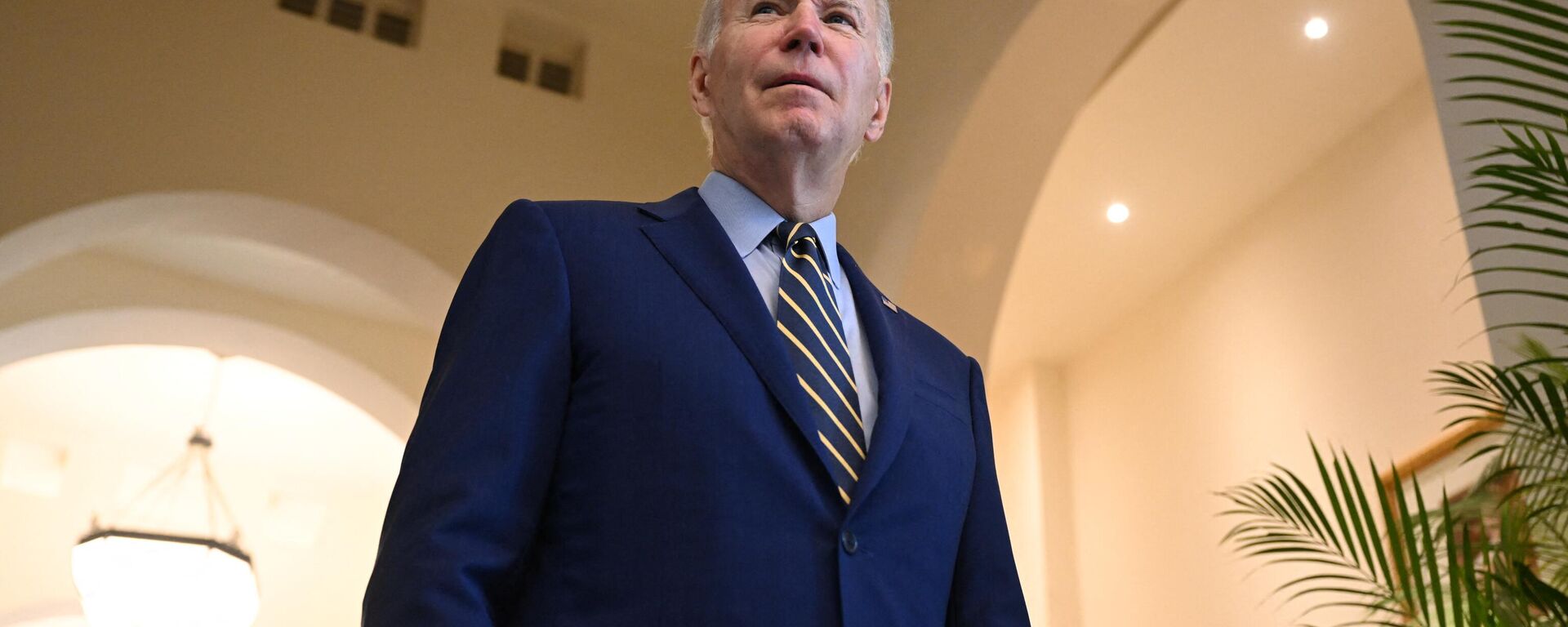
14 November 2022, 10:18 GMT
With tensions in the Taiwan Strait rising amid Biden’s repeated stoking of Chinese fury by pledging to scrap Washington’s policy of “strategic ambiguity” vis-à-vis the island in favor of a firm commitment to “defend” Taipei, Taiwanese officials and media have noticed something peculiar: the weapons they bought – sometimes as far back as two US administrations ago –
are not arriving.
US media now estimates the total size of the backlog to have hit
$18.7 billion.Throughout the past year, American weapons makers have pointed to the ongoing crisis in Ukraine to explain away the delays. In May, Taiwan’s Defense Ministry
announced that it would have to find a stopgap replacement to the Paladins it ordered in 2021, after BAE Systems Inc. informed Taipei that it wouldn’t get the system until “2026 at the earliest.”
Other weapons meant for Taiwan may have also wound up in Ukraine instead, ranging from Javelin and Stinger missiles (Washington and its allies have sent thousands to Kiev), to HIMARS (the US has delivered
at least 26 of the precision artillery systems to Ukraine, with the Russian military saying it’s destroyed at least 10 of them to date).
Even before the escalation of the Ukraine crisis, Washington had excuses for the failure to deliver weapons to Taiwan on time. Lockheed Martin has explained, for example, that the 66 F-16 jets Taiwan bought for $8 billion in 2019 faced production delays
thanks to COVID and supply chain issues.
Limited Time Offer, Buy Now
Notwithstanding the years-long backlog and delays, Washington
has continued to lobby Taipei to "buy American," even citing the Ukraine crisis as a selling point. “This is a big lesson learned and a wakeup call, particularly with respect to not only having the right kit, but...people trained to use it the right way,” US Chief of Naval Operations Admiral Michael Gilday
said in May. Gilday, incidentally, is one of those Pentagon officials claiming China could invade Taiwan
in 2023.
Arms sales to Taiwan is a bipartisan affair. In July, shortly before Democratic House Speaker Nancy Pelosi set off on her provocative trip to Taiwan, Republican lawmakers slapped together a “lend-lease” military assistance bill for the island,
proposing a 12-year repayment window for any lent or leased weapons in the event of war. Congress has also proposed ramping up support to Taipei by
designating Taiwan a “Major Non-NATO Ally,” a step which would further ease arms sales.
Last month, Japanese media reported that officials in Washington and Taipei were holding “initial discussions” on a joint weapons production agreement, which could ease the transfer of US military technology to Taiwan for its manufacture on the island, and/or build weapons inside the US from components made in Taiwan.
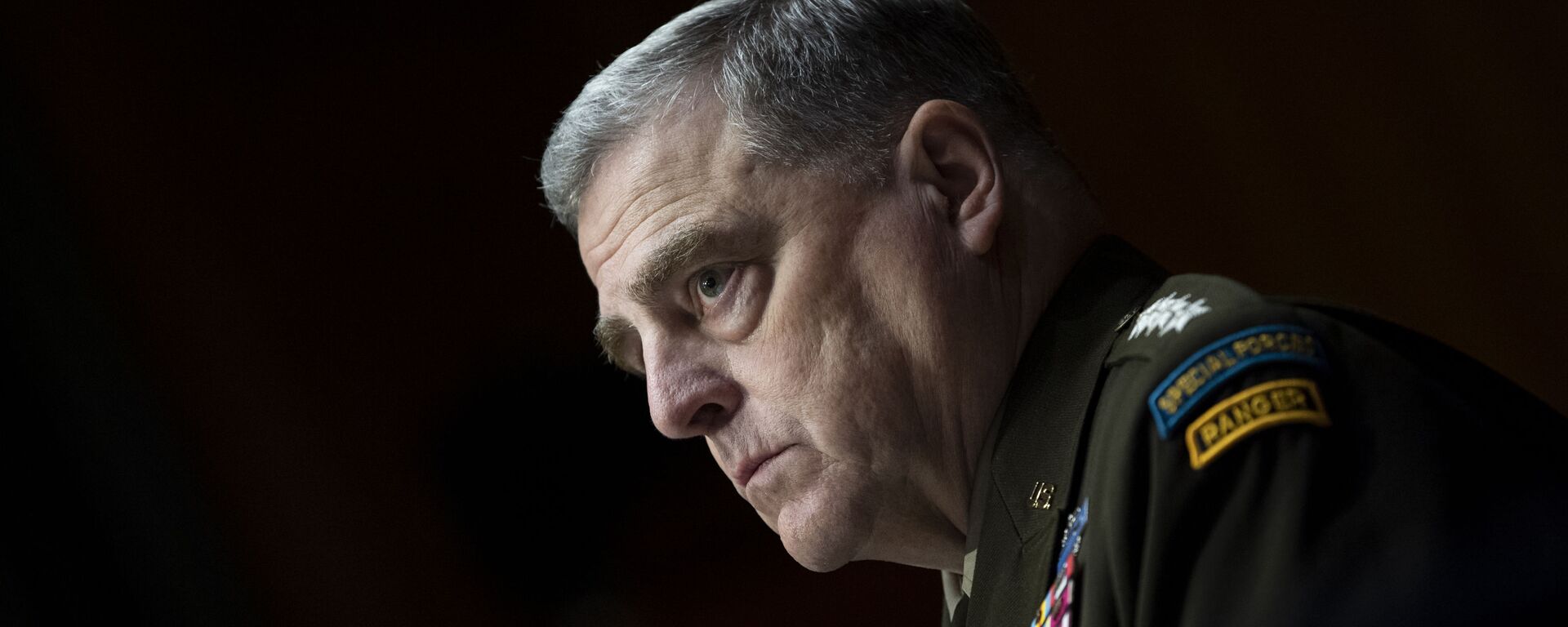
10 November 2022, 17:18 GMT
Why does the US keep pumping up Taipei’s hopes for additional weapons, notwithstanding the multi-year backlog in deliveries which could run the better part of a decade? Part of the answer may be that despite its huffing and puffing, Washington doesn’t really believe that the People’s Republic will try to reunite with the island by force. Why might they think that? Perhaps because Washington listens to what Chinese officials are actually saying.
In his
address to the 20th Congress of the Chinese Communist Party in October, President Xi Jinping reiterated that Beijing remains committed to a peaceful reunification of Taiwan and the mainland.
“The policies of peaceful reunification and the One Country, Two Systems model are the best way to realize unification across the Taiwan Strait; this best serves the interests of Chinese people on both sides of the Strait and the entire Chinese nation,” Xi stressed.
How did most Western media
report on Xi's speech? By quoting his warning that China would “never compromise to renounce the use of force” in the face of threats by external forces (read: the US) and Taiwan separatists seeking to permanently separate the island from the mainland.
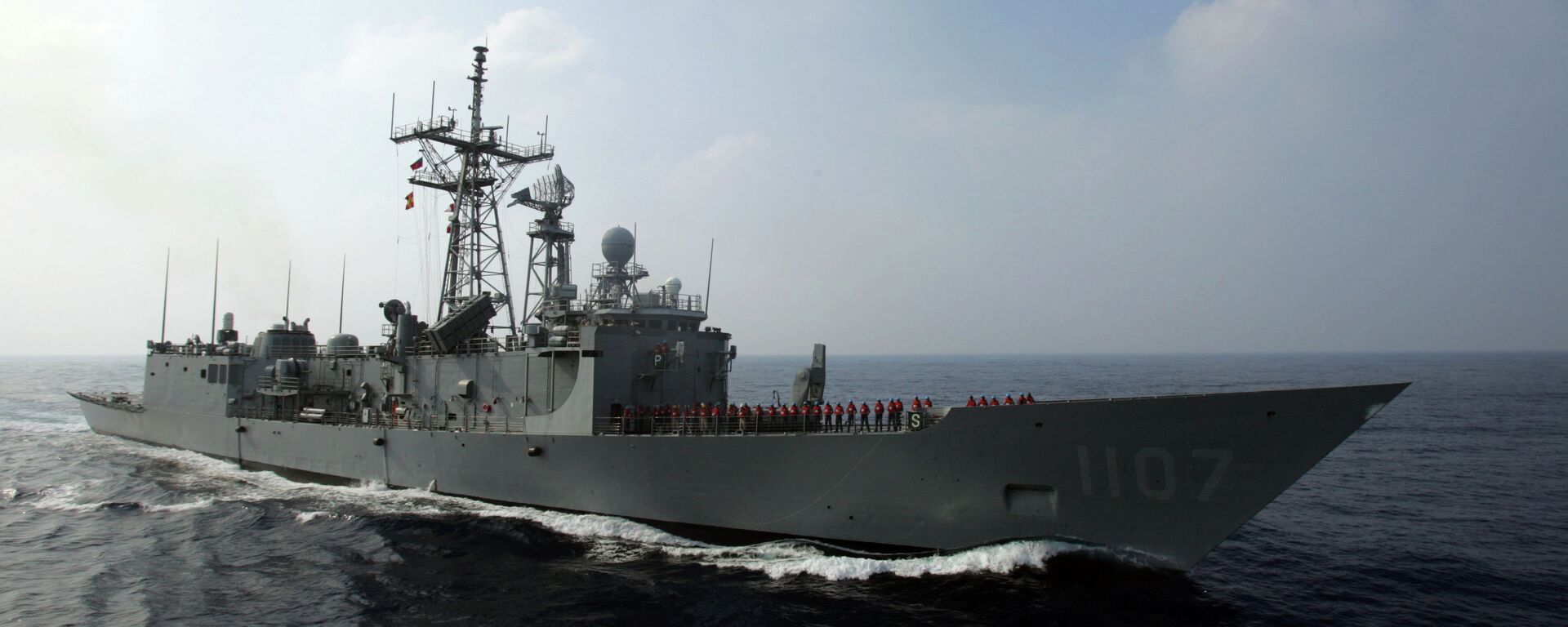
2 November 2022, 19:07 GMT
In addition to being seen as provocative by Beijing, American weapons sales to Taiwan are technically illegal under treaties underpinning Sino-US relations. As the Office of the Historian at the US State Department
notes on its website, an August 17, 1982 US-China communique commits the US to “gradually reduce” its weapons sales to the island.
The
treaty, signed over 40 years ago now, acknowledges Taiwan as a part of China, and states that Washington “does not seek out a long-term policy of arms sales to Taiwan, that its arms sales to Taiwan will not exceed, either in qualitative or in quantitative terms, the level of those supplied in recent years since the establishment of diplomatic relations between the United States and China, and that it intends gradually to reduce its sale of arms to Taiwan, leading, over a period of time, to a final resolution.”
Why has Washington consistently dragged its feet on meeting its treaty obligations before Beijing in the four decades since? Perhaps it just doesn’t want to lose the "goose" that gives US weapons makers tens of billions of dollars’ worth of "golden eggs," even if this means risking war with China.
